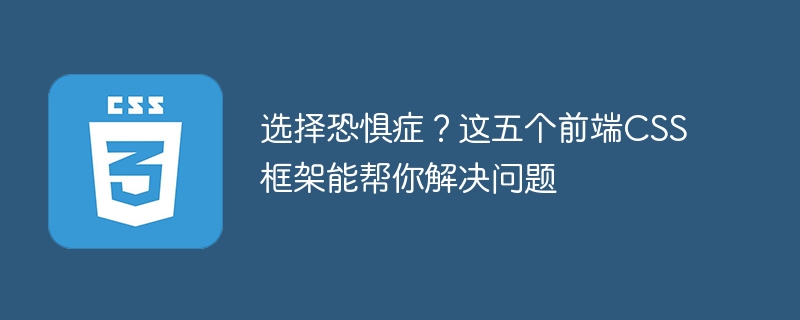

Choice Phobia Disorder? These five front-end CSS frameworks can help you solve your problems
In recent years, front-end developers have entered a golden age. With the rapid development of the Internet, people have higher and higher requirements for web design and user experience. However, it's not easy to build beautiful web pages quickly and efficiently, especially for those who may be intimidated by CSS coding. Fortunately, front-end developers have already prepared some CSS frameworks for us, which can help us easily build beautiful and powerful web pages. This article will introduce five front-end CSS frameworks that can help you overcome your fear of choice.
Summary
Whether you are a novice or an experienced user, the front-end CSS framework can provide you with great help. Not only do they speed up development, they also increase code reusability and maintainability. Choosing a framework that's right for you isn't easy, but once you master how to use them, you'll be able to take full advantage of their power. I hope these five front-end CSS frameworks can help you overcome your phobia of choice and build beautiful web pages faster and better.
The above is the detailed content of Overcome the phobia of making choices: These five front-end CSS frameworks will solve the problem for you. For more information, please follow other related articles on the PHP Chinese website!
 Is python front-end or back-end?
Is python front-end or back-end?
 How to implement instant messaging on the front end
How to implement instant messaging on the front end
 What is the difference between css framework and component library
What is the difference between css framework and component library
 The difference between front-end and back-end
The difference between front-end and back-end
 Introduction to the relationship between php and front-end
Introduction to the relationship between php and front-end
 cookie
cookie
 Characteristics of relational databases
Characteristics of relational databases
 vscode Chinese setting method
vscode Chinese setting method